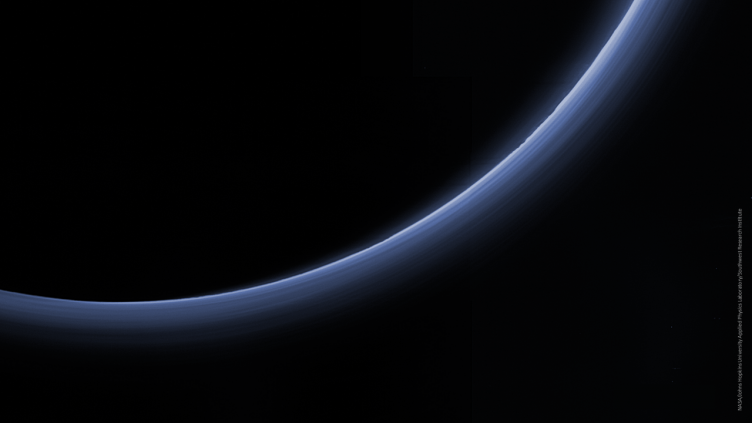A study that followed the evolution of Pluto’s atmosphere for fourteen years shows its seasonal nature, and predicts that it will now start to condensate as frost.
This study was published in the journal Astronomy and Astrophysics and had the participation of Pedro Machado, of Instituto de Astrofísica e Ciências do Espaço (IA) and Faculdade de Ciências da Universidade de Lisboa (FCUL).
The authors analysed data from this dwarf planet’s atmosphere in the altitude range of 5 to 380 kilometres, collected between 2002 and 2016. This period overlapped with the Summer in Pluto’s northern hemisphere1, where are mostly concentrated the reservoirs of nitrogen ice, which sublimate under the exposure and the proximity to the Sun.
Data indicate that the atmospheric pressure at the surface has risen by about twofold and a half since 1988 until its maximum in 2015, yet still one hundred thousand times thinner than the average atmospheric pressure on Earth at sea-level.
“More and more we look at Pluto’s seasonal atmosphere as a cometary activity,” says Pedro Machado. “Since it is a body of small mass, nitrogen molecules gain the escape velocity very easily, and Pluto looses atmosphere, like the comets.”
Notes:
- Due to its strongly tilted rotation axis, Pluto spins almost laying on its orbit. This causes it to expose permanently to the Sun the northern latitudes during a fraction of the more than two centuries that it takes to complete a full turn around the Sun. This period overlaps with the crossing of the point in its orbit closest to the Sun (perihelion), which happened in 1989. Pluto has a very eccentric orbit, varying its distance from the Sun between about 30 and 49 times the average distance of the Earth from the Sun.


